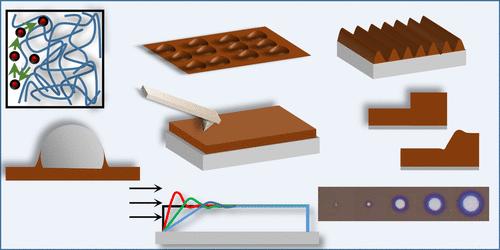Advancements in Novel Mechano-Rheological Probes for Studying Glassy Dynamics in Nanoconfined Thin Polymer Films
IF 4.7
Q1 POLYMER SCIENCE
引用次数: 0
Abstract
The nanoconfinement effects of glassy polymer thin films on their thermal and mechanical properties have been investigated thoroughly, especially with an emphasis on its altered glass transition behavior compared to bulk polymer, which has been known for almost three decades. While research in this direction is still evolving, reaching new heights to unravel the underlying physics of phenomena observed in confined thin polymer films, we have a much clearer picture now. This, in turn, has promoted their application in miniaturized and functional applications. To extract the full potential of such confined films, starting from their fabrication, function, and various applications, we must realize the necessity to have an understanding and availability of robust characterization protocols that specifically target thin film thermo-mechanical stability. Being nanometer-sized in thickness, often atop a solid substrate, direct mechanical testing on such films becomes extremely challenging and often encounters serious complexity from the dominating effect of the substrate. In this review, we have compiled together a few important novel and promising techniques for mechano-rheological characterization of glassy polymer thin films. The conceptual background involved in each technique, constitutive equations, methodology, and current status of research are touched upon following a pedagogical tutorial approach. Further, we discussed each technique’s success and limitations, carefully covering the puzzling or contradicting observations reported within the broad nexus of glass transition temperature–viscosity–modulus–molecular mobility (including diffusion and relaxation).

用于研究纳米约束薄聚合物薄膜玻璃态动力学的新型机械流变探针的研究进展
人们已经深入研究了玻璃态聚合物薄膜的纳米致密效应对其热性能和机械性能的影响,特别是与块状聚合物相比其玻璃转变行为的改变。虽然这方面的研究仍在不断发展,并达到了新的高度,以揭示在密闭聚合物薄膜中观察到的现象的基本物理原理,但我们现在已经有了更清晰的认识。这反过来又促进了它们在微型化和功能性应用中的应用。为了充分挖掘这种封闭薄膜的潜力,从它们的制造、功能和各种应用入手,我们必须认识到有必要了解和掌握专门针对薄膜热机械稳定性的可靠表征规程。由于薄膜厚度仅为纳米级,通常位于固体基底之上,因此对此类薄膜进行直接机械测试极具挑战性,而且往往会因基底的主导效应而遭遇严重的复杂性。在本综述中,我们汇集了几种重要的、新颖的、有前途的玻璃聚合物薄膜机械流变学表征技术。每种技术所涉及的概念背景、构成方程、方法和研究现状都以教学教程的方式进行了阐述。此外,我们还讨论了每种技术的成功之处和局限性,仔细研究了在玻璃化温度-粘度-模量-分子流动性(包括扩散和弛豫)这一广泛联系中报告的令人费解或相互矛盾的观察结果。
本文章由计算机程序翻译,如有差异,请以英文原文为准。
求助全文
约1分钟内获得全文
求助全文

 求助内容:
求助内容: 应助结果提醒方式:
应助结果提醒方式:


